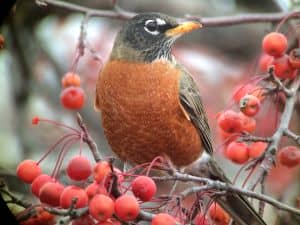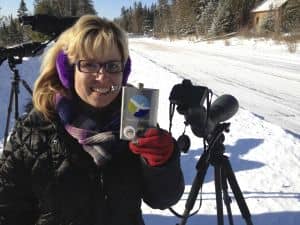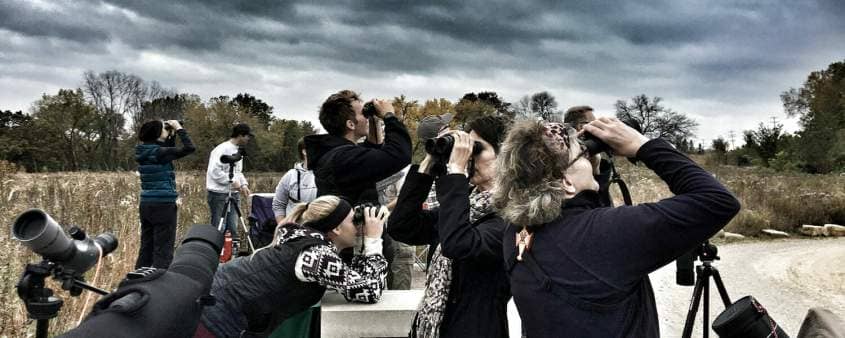It’s that special time of year when National Audubon rallies birders all over North America to track winter bird populations with the Christmas Bird Count. These events are so popular with local Audubon chapters. The end of the day is usually capped off with a celebratory gathering at a bar or pot luck.
If you’ve never participated in one, it’s a fun way to dip your toes into winter birding and meet local birders. By participating in one now, you will be helping to contribute to over 100 years of data already gathered by birders. We’ve learned a lot about the growing populations of snow geese. The dwindling populations of bobwhite and the surprising fact that robins are all over the US all winter long.
Mark Your Calendar
All the counts happen between December 14 – January 5, and take place in an established 15-mile wide diameter circle. Each one has it’s own designated compiler. Since most people have very firm plans on Christmas Day, most counts happen in and around the holiday season. Count volunteers follow specified routes through the circle assigned by the compiler. If you have a route that you’d like to do. Like say you discover your personal patch no one knows about is in the count circle, you can let your compiler know that will be your assignment. From there you document all the birds you can see and hear. It’s not just a species tally All birds are counted all day, giving an indication of the total number of birds in the circle that day.

many new to birding are surprised to find American robins in snowy areas in winter.
Some people are lucky enough to have their home be part of a count circle and tally the birds they see in their yards all day long. To find the nearest count circle to, or if your yard is in a count circle. Visit the National Audubon Christmas Bird Count Site and use the hand dandy map feature that shows all of the known count circles.
Birding Identification
If you are nervous about your bird identification skills you can ask if there is a group heading out and be part of a team. More eyes looking means that more birds will be found. Going out with other birders is an excellent way to increase your knowledge too. If you have a scope and camera set up, you will be a welcome addition to the team to help get shots of rare birds.
The Christmas Bird Count started in 1900 and has become continent-wide citizen science project. With data showing the expanding range of birds like northern cardinal and tufted titmice. It’s free to participate and you may get cool winter specialties like snowy owls, snow buntings or out of range hummingbirds.
Birding Photos
Photos can be an important part of the count, especially if there is a rare bird in your count circle to help prove that the group saw it. Photos can also be submitted with your lists and into eBird, which of course helps the Merlin ID app identify bird photos. Remember, even if your photos are not the very best they can still have an identifiable field mark solidifying the identification.

I always pack a celebratory flask of scotch in case anyone gets a new bird and needs to celebrate.
Just because I live in the land of ice and snow doesn’t mean that’s where everyone counts. I know people who plan their holiday travel so they can be in the Rio Grande Valley in Texas, Tucson, Arizona or Miami, Florida to do their bird counting in much warmer weather. That wintering birding data is just as important.
So if you have your scope, smart phone and Phone Skope case you are basically set to help out on a Christmas Bird Count. Another fun thing about bringing your digiscoping kit is if you find a good bird like an owl, putting your phone in video mode allows you to record the bird and everyone can look over your shoulder to see the bird as well.


